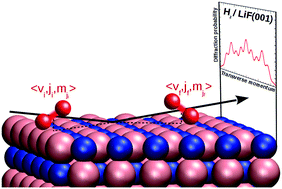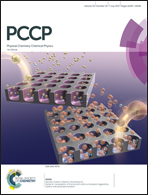Exploring surface landscapes with molecules: rotationally induced diffraction of H2 on LiF(001) under fast grazing incidence conditions
Abstract
Atomic diffraction by surfaces under fast grazing incidence conditions has been used for almost a decade to characterize surface properties with more accuracy than with more traditional atomic diffraction methods. From six-dimensional solutions of the time-dependent Schrödinger equation, we show that diffraction of H2 molecules under fast grazing incidence conditions could be even more informative for the characterization of ionic surfaces, due to the large anisotropic electrostatic interaction between the quadrupole moment of the molecule and the electric field created by the ionic crystal. Using the LiF(001) surface as a benchmark, we show that fast grazing incidence diffraction of H2 strongly depends on the initial rotational state of the molecule, while rotationally inelastic processes are irrelevant. We demonstrate that, as a result of the anisotropy of the impinging projectile, initial rotational excitation leads to an increase in intensity of high-order diffraction peaks at incidence directions that satisfy precise symmetry constraints, thus providing a more detailed information on the surface characteristics than that obtained from low-order atomic diffraction peaks under fast grazing incidence conditions. As quadrupole-ion surface potentials are expected to accurately represent the interaction between H2 and any surface with a marked ionic character, our analysis should be of general applicability to any of such surfaces. Finally, we show that a density functional theory description of the molecule-ion surface potential catches the main features observed experimentally.



 Please wait while we load your content...
Please wait while we load your content...